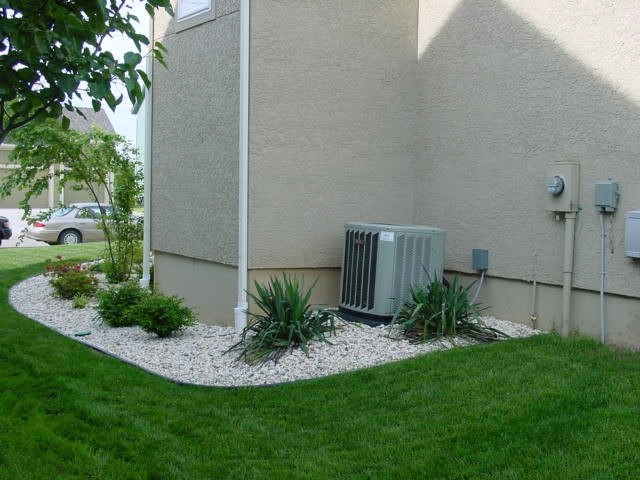Rock Mulch, a Solution, or a Problem?
Return to Miscellaneous Agent Articles
Let’s face it: not everyone fin ds yard work to be a pleasant experience. Although gardeners at heart find joy in nurturing plants, the weekend warriors consider yard work a necessary evil. This is just another task to be done and checked off the list. Regardless of whether we are gardeners or weekend warriors, we still look for ways to reduce the tedious yard work.
ds yard work to be a pleasant experience. Although gardeners at heart find joy in nurturing plants, the weekend warriors consider yard work a necessary evil. This is just another task to be done and checked off the list. Regardless of whether we are gardeners or weekend warriors, we still look for ways to reduce the tedious yard work.
Mulching is one of "those" recommended gardening practices that are considered work. Bags are heavy and awkward. The process involves lots of hauling, stooping, and bending, and it is expensive. We all look for ways to ease this yearly practice. One common substitute for the bark mulch is rock or gravel.
Rock mulch might seem like the perfect alternative. A permanent solution to an annual chore. Before you spread that load of gravel and think -one and done -let’s look at the reality. It may not be the solution to your work.
Rock mulch contributes to the heat island effect as it reflects and absorbs heat. This increases soil temperature and hurts the plants. Organic materials, even dead mulch, retain moisture and cool the soil. This helps provide nutrients for plant health as the mulch decomposes.
Freshly spread rock mulch looks fresh and clean. Over time, the look fades and becomes a maintenance hassle. Midwest winds blow fine soil into the cracks of the gravel, along with weed seeds. This creates the ideal seedbed for germination. Weeds that germinate in rocky, dusty soil are difficult to remove as their roots intertwine throughout the rocks and the landscape fabric placed under the rock to hold the soil in place.
Applying rock to a slope or even a slight incline? The rock will slide down the hill and expose the black landscape fabric. As the fabric ages, it frays and can become unsightly. This requires even more rock to hide the deteriorating material.
Landscape fabric under the rocks restricts water and air movement, which reduces soil health and plant growth. Trapped sediments make the mulch layer less permeable, which reduces water infiltration and increases water runoff. This leads to poor plant vigor and the increased need for supplemental irrigation—the decreased life span results in increased plant replacement. Removal and replanting are extremely challenging when digging through the fabric and rocks.
Have you tried raking rocks? It is no easy task to remove the wind-blown leaves. The options are to use a leaf blower or hand removal carefully. Leaves left on the gravel layer break down into fine pieces, which accelerates the silting and weed pressure.
The only options for removing weeds in rock mulch are hand pulling or herbicides. Forget the hoe as it is useless in rock. Herbicides, either chemical or organic, will require multiple applications during the growing season to keep the rocks weed-free. You still need to physically remove the dead weed stems and stalks. The longer the rock is in place, the worse the weed problem becomes.
Have you tried to remove rock mulch? Our office receives calls from new homeowners with rock mulch. They have this idealistic thought someone will come to remove the rock for them since it's free. The only catch is they must be removed. Removal of silt-filled rock mulch is done by picking up one rock at a time or bringing in a front-end loader to remove the rocks. Rock is easier to install than remove.
You might want to reconsider before installing rock mulch. It sounds like an ideal solution, but in the end, it could lead to a very rocky relationship.

Have questions? The Garden Hotline is staffed by trained EMG volunteers and Extension staff who will assist you with questions.
Phone: (913) 715-7050
Email: garden.help@jocogov.org